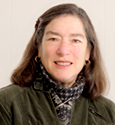
Elizabeth F. Fideler, EdD
Seniors who are able to keep working and want to do so—who enjoy and get satisfaction from the challenge—deserve to be recognized, understood, and celebrated, especially on the job.
Just last year, the New York Times published profiles of two prominent scientists in their 90s who are still working and contributing to their fields. There’s nutrition scientist Fred Kummerow, age 99, who directs laboratory research at the University of Illinois and publishes papers in peer-reviewed scientific journals. And there’s neuropsychologist Brenda Milner, age 95, who studies differences between the left and right brain at the Montreal Neurological Institute and Hospital.
Outliers? Perhaps. But these people are also the leading edge of a new phenomenon: bypassing the conventional age of retirement to continue working.
The average retirement age in the United States has been ticking upwards, from 57 in 1993 to 59 in 2003 and now to 61, according to Gallup’s annual Economy and Personal Finance survey. Moreover, Gallup found, more than half of those between the ages of 58 and 64 who are still working expect to continue beyond the age of 65. Indeed, the fastest-growing segment of the labor force (by rate of increase) is women who are 65 and older, according to a report by the U.S. Bureau of Labor Statistics. Men in this age group are close behind.
Among the reasons for these shifts are the economic downturn, which diminished retirement savings; laws eliminating most mandatory retirement; the gradual increase in the age of eligibility for Social Security; and the fact that many baby boomers entering their 60s are ill-prepared for retirement.
But improvements in health and longevity also play a role, allowing seniors who simply love what they do to keep at it.
Last July, Kimberly Blanton described the surprising results of a recent study in the blog she writes for the Center for Retirement Research, at Boston College. She commented, “By the time people reach their mid-60s, two out of three have retired, either voluntarily or because they’re unable to keep or find a job. By age 75, nine out of ten are out of the labor force. But the minority who do continue working aren’t just survivors—they’re thrivers.” What’s more, she observed, this group is dominated by highly educated, high-achieving professionals who, contrary to stereotypes, are as productive (measured by hourly wages) as younger workers in their prime earning years.
The research I conducted for my two most recent books reveals that mature professional men tend to define themselves, as their fathers did, by what they do for a living and the career goals they have reached. Female professionals who came of age in the same period (from the 1950s to the 1970s) tend to define themselves first in the roles associated with their homes, families, and collegial relationships and then as career women. Other differences, including choice of career field, number of years on the job, and pay inequities, frequently result in greater financial security for older men than for older women.
Now, my research shows, having met disparate traditional educational, social, and economic expectations over the years, mature professional women and men find themselves on the same path in their work lives, blazing it and opening up new territory as they age.
Author
Elizabeth F. Fideler, EdD
Research Fellow
Sloan Center on Aging & Work, Boston College
Email: lizpaulfideler@mindspring.com

